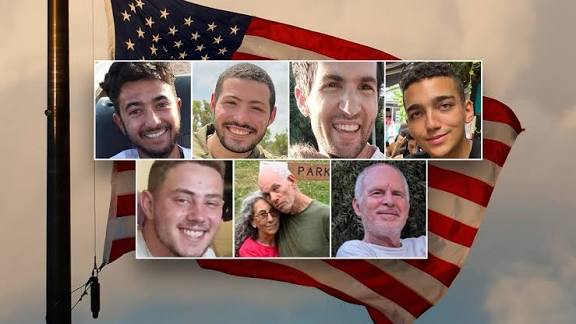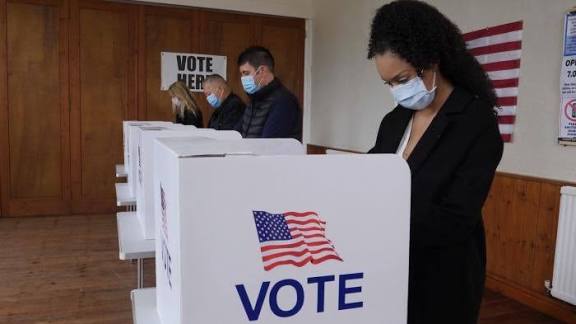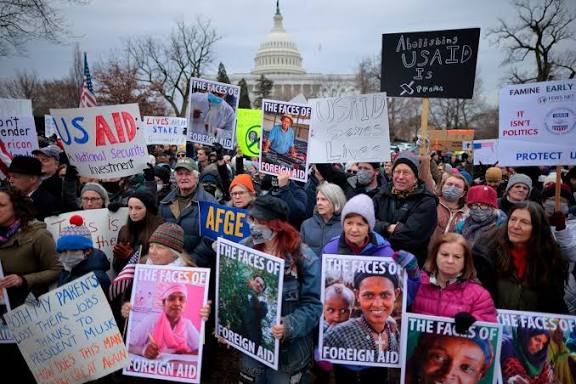USA hostages released: 8 american hostages in gaza,remaining hostages

Under the US-led deal, Hamas and Israeli officials agreed to release 20 living hostages and the bodies of 28 dead hostages. Today we will discuss about USA hostages released: 8 american hostages in gaza,remaining hostages
USA hostages released: 8 american hostages in gaza,remaining hostages
After nearly two years of agony and diplomatic struggle, eight American hostages held in Gaza have finally been released. The news brought a wave of relief across the United States and Israel, but the celebrations are bittersweet. Several hostages remain missing, presumed dead, or unaccounted for. The hostage crisis, which began during Hamas’s October 2023 assault on Israel, continues to haunt families and policymakers alike.
This article examines how the release unfolded, who was freed, what remains uncertain, and what this means for U.S.–Middle East relations, the Israeli government, and ongoing efforts to bring every remaining hostage home.
1. The Origin of the Gaza Hostage Crisis

The crisis began on October 7, 2023, when Hamas launched a massive surprise attack on southern Israel. In a single day, hundreds of Israeli civilians were killed, and more than 200 people—men, women, and children—were abducted and taken into Gaza. Among them were several dual U.S.–Israeli citizens and at least eight Americans.
The abductions triggered an international outcry and a prolonged war in Gaza. Israel vowed to destroy Hamas and recover the hostages “at any cost.” For the United States, the hostage situation became not just a humanitarian concern but also a test of its diplomatic and strategic influence in the Middle East.
Throughout 2024, limited prisoner exchanges occurred, mediated mainly by Qatar, Egypt, and the United States. Each exchange brought moments of relief and renewed hope, yet the majority of hostages remained in captivity, living under harsh conditions in Gaza’s tunnels and safe houses.
2. The 2025 Breakthrough: Eight Americans Released
The Negotiations
In 2025, after months of backchannel discussions, a comprehensive ceasefire and hostage exchange deal was brokered. The United States played a pivotal role, leveraging relationships with Qatar and Egypt to secure the release of all remaining living hostages, including eight Americans.
Under the terms of the deal, Hamas agreed to release 20 living hostages, while Israel consented to free more than 1,700 Palestinian prisoners. The agreement also included the promise to return the remains of 28 hostages who had died in captivity or were killed during the initial attack.
The Released Americans
Among the eight Americans freed was Edan Alexander, a dual citizen who had been captured on October 7. His release was celebrated as a major diplomatic success for Washington. The other seven Americans—whose identities were kept private at the request of families—were reunited with loved ones in Israel before returning home.
Each had endured over 18 months of captivity under dire conditions, often moving between locations to evade Israeli military operations. Medical reports indicated that many suffered from malnutrition, psychological trauma, and untreated illnesses.
Emotional Homecomings
Scenes of joy swept through Tel Aviv’s “Hostage Square,” where thousands gathered to celebrate their release. Families embraced their loved ones, holding up banners reading “Welcome Home” and “Bring Them All Back.” For those still waiting for news of relatives who remain missing, however, the moment was bittersweet.
In the United States, political leaders and citizens alike expressed relief and gratitude. The President hailed the release as “a testament to American resolve and relentless diplomacy,” while pledging continued efforts to locate and return every remaining hostage.
3. The Fate of the Remaining Hostages
Living Hostages
The latest ceasefire deal resulted in the release of all living hostages known to be held by Hamas. However, intelligence assessments suggest that several others may still be missing in Gaza, held by smaller armed groups or unaccounted for amid the chaos of war.
Some analysts believe that a few captives might have been transferred between factions or perished in Israeli airstrikes before negotiations could be completed. Hamas has maintained that it no longer holds any living hostages, though Israel disputes this claim.
Deceased Hostages and Missing Remains
The agreement required Hamas to return 28 bodies of hostages who died in captivity. To date, only a fraction of these remains have been recovered. The militant group claims that extensive destruction in Gaza has made it impossible to locate all the bodies, while Israel and hostages’ families accuse Hamas of withholding information or using remains as leverage for further concessions.
The families of two American-Israeli soldiers, Itay Chen and Omer Neutra, have publicly demanded that Hamas return their sons’ remains. Their campaigns have drawn significant support from the American public and Congress, urging the U.S. government to intensify diplomatic pressure until every deceased citizen is accounted for.
4. Challenges in Recovering the Missing
Destruction in Gaza
After months of heavy bombardment, much of Gaza’s infrastructure lies in ruins. Entire neighborhoods have been flattened, and many areas remain inaccessible due to debris, unexploded ordnance, and active combat zones. This devastation complicates efforts to locate and recover the bodies of hostages.
Search operations require specialized equipment such as ground-penetrating radar, excavation machinery, and forensic expertise. Even with these tools, the scale of destruction poses immense challenges.
Security and Access Barriers
Despite the ceasefire, security conditions in Gaza remain volatile. Militants continue to operate in parts of the territory, and rival factions control various areas. International recovery teams cannot safely enter certain zones without coordination between Israel, Hamas, and mediating parties.
The International Red Cross, which played a key role in transferring released hostages, has offered to assist with recovery efforts but requires security guarantees to operate.
Identification Difficulties
Even when remains are recovered, identification is not straightforward. Many bodies have been buried under rubble or subjected to harsh conditions that complicate forensic analysis. Israel’s national forensic institute is conducting DNA testing and other identification procedures, but progress is slow.
For families, the waiting is agonizing. Each new discovery brings both hope and heartbreak.
5. U.S. Diplomacy and Global Reactions
The Role of the United States
The successful release of the American hostages underscores Washington’s central role in Middle Eastern diplomacy. American negotiators worked closely with Qatar and Egypt to maintain communication with Hamas leadership in Doha and Gaza.
The U.S. maintained a consistent message: all hostages must be released, living and deceased. American intelligence reportedly provided logistical support to locate captives and verify their identities before transfer.
Officials have indicated that U.S. pressure will continue until every missing person is accounted for. Economic incentives and humanitarian aid are being used as leverage to ensure compliance with the agreement.
Reactions in Israel
In Israel, the news brought temporary unity to a divided nation. Political leaders across party lines celebrated the release as a victory for persistence and international cooperation. However, internal criticism remains strong—many families of hostages argue that the government acted too slowly or prioritized military operations over negotiations.
Protests have continued in Tel Aviv, with demonstrators demanding a comprehensive return of all remains and a final accounting of every missing Israeli and foreign national.
Global and Regional Implications
The deal has been welcomed by most Western nations and regional powers. Qatar and Egypt, long mediators in Israeli-Palestinian disputes, were praised for their diplomatic skill. The United Nations called the release “a crucial step toward humanitarian progress,” urging all sides to maintain the ceasefire and prevent further escalation.
Yet the underlying tensions remain unresolved. Israel insists that Hamas must fully disarm and release all information on the hostages before broader reconstruction aid can proceed. Hamas, on the other hand, views the exchange as proof that military resistance can yield concessions.
6. Humanitarian and Emotional Toll
Beyond politics and diplomacy, the hostage crisis has left deep emotional scars. Families of released hostages describe severe psychological trauma, nightmares, and long-term anxiety. Many captives were isolated for months, deprived of sunlight, and uncertain if they would ever return home.
For those whose loved ones remain missing, life has become a cycle of hope and despair. Support groups and counseling centers have been established in both Israel and the U.S. to assist affected families. Psychologists warn that the collective trauma of the hostage crisis may persist for a generation.
7. What Happens Next
Completing the Recovery
The next phase involves locating and recovering the remaining hostage remains still buried in Gaza. This will require international cooperation, access agreements, and the deployment of specialized recovery teams. The process may take months, if not years, to complete.
Israel and the U.S. are also exploring new technological methods, such as satellite imaging and drone-assisted mapping, to pinpoint likely burial or collapse sites. Meanwhile, diplomatic channels remain active to ensure Hamas continues cooperating.
Ensuring Accountability
Both Israel and the United States have vowed to seek justice for those responsible for hostage-taking, executions, and mistreatment of captives. Investigations into potential war crimes are underway. Human rights organizations have called for impartial probes to ensure accountability on all sides of the conflict.
Rebuilding Trust and Stability
With the hostage issue at the forefront of the peace process, its resolution could pave the way for broader regional reconciliation. For Israel, recovering every hostage is not just a national duty—it is a moral imperative. For Hamas, fulfilling its commitments could help ease international isolation.
The U.S. remains a crucial player in this equation. American credibility in the Middle East will partly hinge on ensuring that all citizens—living or deceased—are brought home and that the ceasefire evolves into a sustainable peace framework.
8. Lessons and Reflections
The Gaza hostage crisis offers sobering lessons about modern warfare, diplomacy, and the human cost of political violence. It reveals how quickly civilians can become pawns in broader geopolitical struggles—and how difficult it is to reverse such tragedies once they begin.
For the United States, the crisis reaffirmed the importance of quiet diplomacy, multilateral coordination, and persistence. While military might can deter enemies, it is often diplomacy that saves lives.
For Israel, it underscored the delicate balance between security operations and humanitarian considerations. Public pressure for hostages’ release eventually reshaped national strategy and forced leaders to prioritize negotiation over confrontation.
And for the global community, the crisis illustrated the limits of international law in preventing abductions and protecting civilians in war zones. Despite global condemnation, hostage-taking remains a recurring tactic in asymmetric warfare.
Conclusion
The release of eight American hostages from Gaza marks a moment of relief, triumph, and reflection. It demonstrates that even amid war and destruction, diplomacy can prevail when nations persist with patience and moral clarity.
Yet the mission is not complete. Dozens of hostages’ remains still lie buried beneath Gaza’s ruins, their families waiting for closure that may take years to arrive. The world owes them not only remembrance but action—continued pressure, humanitarian effort, and commitment to justice.
The United States, Israel, and their allies must now focus on turning this fragile truce into lasting stability. Every recovered life and returned body brings the world one step closer to healing the wounds of one of the most painful chapters in recent Middle Eastern history.
Until then, the message from the families remains the same: Bring them all home.
How useful was this post?
Click on a star to rate it!
Average rating 0 / 5. Vote count: 0
No votes so far! Be the first to rate this post.
About the Author
usa5911.com
Administrator
Hi, I’m Gurdeep Singh, a professional content writer from India with over 3 years of experience in the field. I specialize in covering U.S. politics, delivering timely and engaging content tailored specifically for an American audience. Along with my dedicated team, we track and report on all the latest political trends, news, and in-depth analysis shaping the United States today. Our goal is to provide clear, factual, and compelling content that keeps readers informed and engaged with the ever-changing political landscape.




